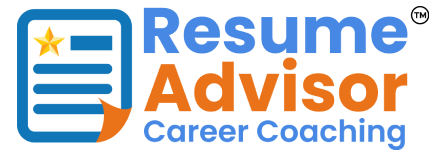
A letter of introduction is more than just a formality—it’s your first handshake with a potential employer, client, or business contact. In a world where first impressions matter, this one-page document can open doors to new opportunities, create valuable connections, and set you apart from the crowd.
We understand the importance of standing out in today’s competitive job market. With personalized guidance from Jonathan and his expert team, job seekers learn to craft compelling letters of introduction that reflect their strengths, personality, and professional value.
What Is a Letter of Introduction?
It is a formal yet personal communication used to introduce yourself or another person to a professional contact. It’s often used to establish new relationships, recommend someone, or express interest in opportunities within a company or organization.
Unlike a standard cover letter, an introduction isn’t necessarily tied to a specific job posting. Instead, it opens the door for future collaboration or employment. It’s your way of saying, “Here’s who I am, and here’s what I bring to the table.”
Difference Between a Cover Letter and a Letter of Introduction
While they may sound similar, it differs from a cover letter in purpose and tone.
- A cover letter responds to a job opening.
- A letter of introduction, on the other hand, initiates contact and builds rapport, even if no position is currently available.
We often recommend clients send it when networking, seeking referrals, or exploring hidden job markets.
Why it Matters in 2025
In 2025’s fast-paced digital landscape, personalization and authentic communication reign supreme. Automated applications and generic emails often get lost in crowded inboxes.
That’s where it shines—it humanizes your professional story and connects you directly with decision-makers.
Jonathan emphasizes that “a well-crafted letter of introduction demonstrates initiative, professionalism, and genuine interest—traits employers notice immediately.”
When to Use a Letter of Introduction
You can use it in several key scenarios:
- Introducing yourself to a hiring manager at a target company
- Reaching out to a recruiter or career coach
- Networking with professionals in your field
- Recommending a colleague or connection
- Announcing a career change or new venture
Each version of it should be personalized to fit your audience’s needs and expectations.
Core Elements of an Effective Letter of Introduction
A winning letter of introduction includes:
- Professional Greeting – Address the recipient by name.
- Strong Opening Paragraph – Clearly state who you are and your purpose.
- Value Proposition – Highlight your experience and what makes you unique.
- Connection Point – Mention any mutual contacts or shared interests.
- Polite Closing – Express gratitude and include a call to action.
Jonathan advises clients to “lead with clarity and close with confidence.”
Step-by-Step Guide to Writing a Letter of Introduction
- Research the Recipient – Understand their role, company, and needs.
- Write a Compelling Opening – Capture attention with enthusiasm and relevance.
- Introduce Yourself Clearly – Include your current role, experience, and career goals.
- Explain Why You’re Reaching Out – Be specific about your intention.
- Show Value – Briefly describe how your skills or expertise can help.
- End with Gratitude – Thank them for their time and express openness to future dialogue.
This approach ensures your introduction feels both genuine and strategic.
Common Mistakes to Avoid
Avoid these pitfalls:
- Sending a generic letter without personalization
- Writing too long or too formally
- Focusing only on yourself instead of mutual value
- Forgetting to include a call to action
We ensure every letter of introduction feels personal, persuasive, and polished.
Sample Letter of Introduction Template
Here’s a brief example:
Subject: Introduction – [Your Name]
Dear [Recipient Name],
I hope this message finds you well. My name is [Your Name], and I’m a [Your Profession] with [X years] of experience in [industry/field].
I’m reaching out to introduce myself and express my interest in learning more about opportunities within [Company Name]. I’ve long admired your organization’s commitment to [specific value or goal].
I’d appreciate any insights or advice you could share. Thank you for your time and consideration.
Best regards,
[Your Name]
Tips from Resume Advisor Experts
Jonathan shares:
“A strong letter of introduction doesn’t just present information—it builds connection. Keep it authentic, brief, and focused on shared value.”
He also recommends pairing your letter of introduction with an updated LinkedIn profile to create a consistent professional image.
How we Can Help You Succeed
We specialize in helping professionals create winning application materials—including resumes, cover letters, and letters of introduction.
Our services include:
- Personalized career coaching
- Resume writing and optimization
- LinkedIn profile development
- Interview preparation
- Networking and job search strategy
Jonathan and his team empower clients to approach their job search with clarity and confidence, helping them land offers faster.
Contact us to learn more.
Frequently Asked Questions (FAQs)
What’s the main purpose of a letter of introduction?
A letter of introduction is designed to initiate a professional relationship or introduce yourself to a potential employer or contact.
How long should it be?
Ideally, one page or 250–300 words.
When should I send one?
When you’re expanding your network, exploring new opportunities, or introducing a colleague.
Can I email a letter of introduction?
Absolutely! Email is often the best and most efficient format.
Should I attach my resume?
Yes, when appropriate. It gives the recipient more context about your background.
Can Resume Advisor help write my letter?
Yes! we offer expert, personalized guidance to craft the perfect letter of introduction and other career documents.
Conclusion
A letter of introduction can be your golden ticket to career growth and connection. By writing it with authenticity and strategy—and with expert guidance from us—you’ll position yourself for success in any industry.
Your career story deserves to be told the right way. Start crafting your introduction today and take the next bold step toward your professional goals.

